How The ZX Spectrum Became A 1980s Icon
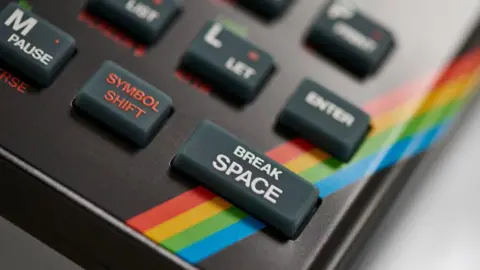 Getty Images
Getty ImagesThe ZX Spectrum was a 1980s icon which played a starring role in the revolution that brought computers into the UK’s homes for the first time.
The 8-bit computer arrived in 1982 with its distinctive rainbow stripe, rubber keys and the high-pitched electronic screech as games loaded.
More than five million were sold, giving people the chance to dabble in computer programming and play games like Manic Miner and Jet Set Willy.
The device was manufactured in Dundee, where The Speccy – as it was affectionately known – helped inspire a generation of games designers.
Now its story is being told in The Rubber-Keyed Wonder, a new documentary which looks at its impact.
 Getty Images
Getty ImagesCreated by Sir Clive Sinclair and his team, the ZX Spectrum hit the high street in April 1982.
It followed the hugely successful, if more technically-limited, ZX81, which had been many people’s first encounter with home computing.
The ZX Spectrum’s games were downloaded via a cassette player and displayed on a TV screen – and they were in colour, unlike its monochrome predecessor.
It cost £175 for the 48k model and £125 for the 16k version, which put it on many Christmas wish lists.
“If you go back a few years to the 1970s, you’ve got a time where home computers didn’t exist,” said Anthony Caulfield, co-director of the new documentary.
“Computers were in mainframes with air conditioning and cost many millions of pounds or dollars to create.
“The whole concept of having a computer in your home was a completely new thing.”
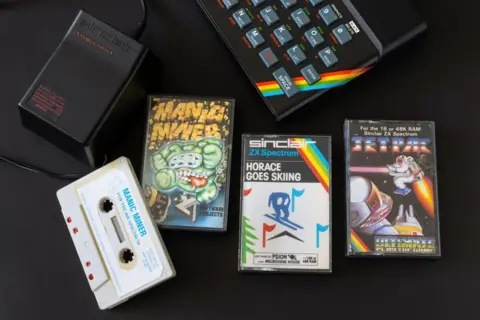 Alamy
AlamyDesigner Rick Dickinson’s rainbow design and rubber keys made for an eye-catching product, which was an instant success.
“The Spectrum brought the arcade to your home,” said Mark Ettle, who is now head of Dundee-based games designer Cobra Mobile.
“There was a plethora of games you could play from the arcade, but there were also original games.
“The Spectrum opened up a world of dabbling in computer programming and very basic graphics.”
With games selling for as much as £15, a lucrative black market trade in copies got under way in playgrounds across the country.
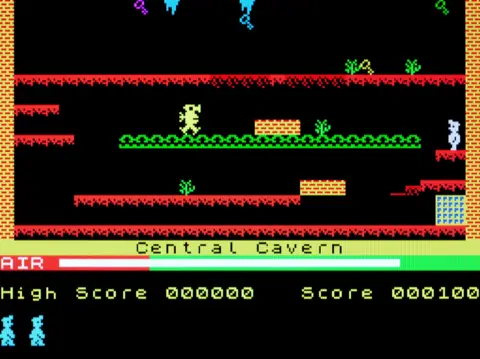 Alamy
AlamyMark Ettle said: “If you came from a background that didn’t have a lot of money you could take a tape and copy a game.
“Copying became a fine art, because you had to have two tape decks wired and cabled in a particular way.”
Games like Manic Miner and its sequel Jet Set Willy, Ant Attack, Skool Daze and Sabre Wulf became instant classics.
“I was particularly good at Sabre Wulf,” said Mark.
“I was one of the first people in the UK to complete the game and was sent a free game as a reward.”
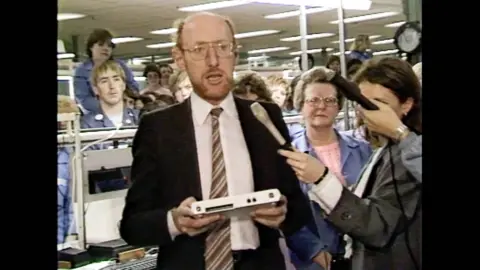
The computer was manufactured at Dundee’s Timex factory.
Sinclair chose the Timex factory to make his computers because it needed the work after watch-making stopped, and he needed a skilled workforce.
At its height, Timex produced a computer every four seconds – although not all of them ended up in stores.
Mark Ettle said people in the area got access to Spectrums in the shops as well as through “the back door” of the Timex factory.
“It got these computers into the hands of people who wouldn’t necessarily get access to them,” he said.
“It kick-started the imagination of what the world could be.”
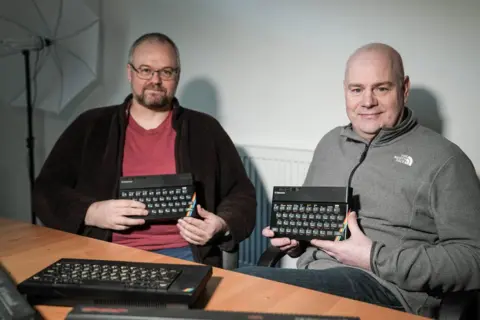
One of those who fell under its spell was Mike Dailly, one of the founders of Dundee-based DMA Design – which produced Lemmings and Grand Theft Auto.
He said: “My mum’s work wanted a database written so they bought a Spectrum for me to work on.
“It was just good fun tinkering with it and making it do things.
“I did play games but I spent most of my time writing stuff and seeing how far I could push it.”
He said the Spectrum’s influence on Dundee as a world-renowned computer gaming centre was “huge.”
He said: “The whole of the original DMA Design pretty much started on Spectrums.”
DMA Design co-founder Dave Jones worked at Timex and when he took redundancy he bought an Amiga computer.
Mike Dailly said: “That kickstarted DMA and the whole of the Dundee industry.
“So the whole of the gaming route comes from the Spectrum.”
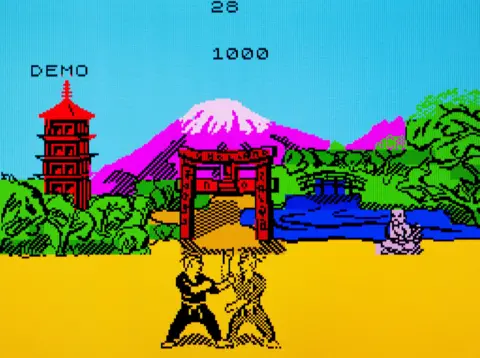 Alamy
AlamyAnthony Caulfield, who co-directed The Rubber-Keyed Wonder with his wife Nicola, said the Spectrum’s name “came up continually” during their previous film on the history of the British gaming industry, From Bedrooms to Billions.
He said: “The baby-boomer generation have got rock’n’roll, a new thing that exploded and evolved for them.
“In a way, for many born in the 1970s or early 1980s, the microchip revolution was our rock’n’roll.
“We kept hearing all these different experiences of when people got their first Spectrum and what it did for them.
“So many people went off in different directions, that we thought it needed its own space to tell that story.”

Later Spectrum models – there were seven in total – failed to capture the public’s imagination in the same way.
Sir Clive’s ill-fated electrically-powered tricycle the Sinclair C5 bombed, costing the inventor millions.
He sold most of Sinclair Research to Alan Sugar’s Amstrad for £5m in 1986, and the Spectrum was discontinued in 1992.
Sir Clive died in September 2021, aged 81.
Mike Dailly said retro gaming events starring the Spectrum were still hugely popular, with new models based on the computer still being produced by enthusiasts.
He said the Spectrum Next was a fan-based version of what the Spectrum could have been.
“So it’s not just people of my age, there are lots of younger folk coming because they like the games,” he said.
“It’s always been about the games.”
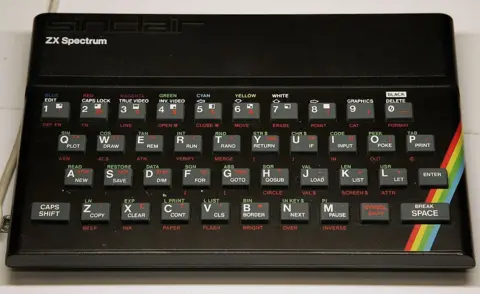 Getty Images
Getty ImagesREAD MORE HERE




